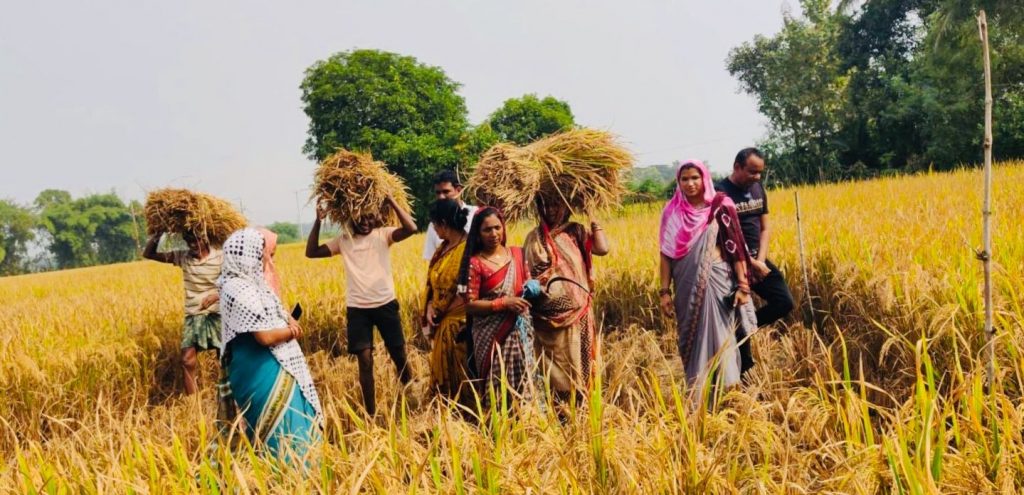Berhampur: SRI (System of Rice Intensification) method of paddy cultivation can help check climate change and benefit the farmers as it consumes very less water in comparison to other methods of cultivation. This is because SRI method does not require continuous flooding for rice cultivation. Taking up paddy cultivation in SRI method helps reduce the possibility of global warming by 29 per cent as it results in 25-70 per cent reduction in discharge of methane and carbon dioxide to the atmosphere. This method also produces more panicles during the harvest, reduces the crop harvest period by at least 10 days, and requires a minimum amount of seed, water, and chemical fertiliser for the crop.
Moreover, paddy cultivation is rain and storm-tolerant and helps in increasing the fertility of the farmland. As a large volume of water is required for rice cultivation, farmers conventionally depend on rainfall to raise their crops. However, due to a change in climatic conditions, it has become a difficult task for the farmers to supply enough water to their farmlands for the growth of the paddy crops. Farmers have been failing to start their cultivation in time due to a lack of water every year. Even if they manage to sow seeds, seedling death comes back to haunt them due to a lack of irrigation facilities. Lack of irrigation results in reduced output for farmers, which is why they are withdrawing from rice cultivation in most cases. Distraught farmers look for financial assistance from the state government but they are often left high and dry.
As a result, in Ganjam district alone hundreds of acres are left uncultivated. In this situation, the district project management unit under the Berhampur Forest department is laying stress on the SRI method of cultivation and drawing the farmers towards it. This has come as a relief for the distressed farmers fed up with crop loss and reduced output in the traditional method of cultivation. SRI method of cultivation is being implemented in the district with the support of the state government, the Green Climate Fund, and the United Nations Development Programme (UNDP). This has helped many farmers in becoming self-reliant and financially independent. Farmers think that this new method is helping them raise their crops without hassle. However, there is significant difference between the SRI and traditional methods of paddy cultivation. In this method, eight to 10-day-old paddy saplings are transplanted within a distance of 25 cm on wet farmlands. Maintaining proper distance during transplantation helps in the growth of the root.
As a result, paddy saplings get more air, sunlight, and nutrients. Jute and long beans are sown along with paddy as green manure. The de-weeding machine is used every tenth day to clear weeds and unwanted shrubs on the farmlands. This helps in aeration of the soil and the weeds also act as organic manure for the crops. The cultivation is resilient to standing water and dampness on the farmland. The output is more where there is proper movement of air. When contacted, Ranjan Kumar Bhoi, the district coordination officer of the Agriculture department said this year over 900 farmers in Chikiti, Rangeilunda, Khallikote and Ganjam blocks have taken up SRI method of cultivation which initially started with only 30 farmers on 10-acre land in 202-23 FY. Assisted by two voluntary outfits Lipika and Pallishree and supervised by 30 experts, an additional 870 farmers have taken up the cultivation this kharif season on 200 acre of farmland. The cultivation was initially started by training the farmers in 39 villages. An increase in cultivation in the coming days can help check climate change and benefit the farmers, Bhoi added.
